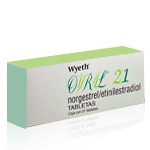Hypomenorrhea: Light Periods and Hormonal Balance


Hypomenorrhea, often referred to as light or scanty menstruation, is a menstrual disorder characterized by abnormally light menstrual bleeding. In contrast to the typical volume of menstrual flow, women experiencing hypomenorrhea may notice only spotting or very minimal bleeding, which may last for a shorter duration than expected. While it is sometimes seen as a normal variation, particularly at the extremes of reproductive life, persistent or sudden onset hypomenorrhea can be indicative of underlying health issues or hormonal imbalances. Understanding the nature of hypomenorrhea, its causes, hormonal involvement, and available treatments such as Ovral G, is key to effective management and reproductive health.
What is Hypomenorrhea?
Hypomenorrhea is defined as a reduced amount of menstrual blood loss during a woman's period. Clinically, it may be measured as less than 20 milliliters of blood loss per menstrual cycle. It is important to distinguish between naturally light periods that occur without any pathology and those that reflect an abnormal condition. For some women, light periods may be part of their normal menstrual pattern, especially during the early years after menarche or approaching menopause. However, when hypomenorrhea is new, accompanied by other symptoms, or causes concern about fertility, it warrants medical attention.
What Causes Hypomenorrhea?
The causes of hypomenorrhea are multifactorial and can include physiological, pathological, or iatrogenic (medically induced) factors. One of the most common physiological causes is hormonal imbalance, particularly involving estrogen and progesterone. Estrogen plays a central role in building up the endometrial lining, while progesterone supports and stabilizes it. A deficiency in either hormone, especially estrogen, may result in inadequate endometrial development and, subsequently, a lighter menstrual flow.
Other causes include chronic anovulation (where ovulation does not occur), which can be linked to conditions like polycystic ovary syndrome (PCOS). Structural issues, such as uterine scarring from surgical procedures like dilation and curettage (D&C), cesarean section, or infections like tuberculosis of the endometrium, can also reduce the surface area of the endometrium and decrease menstrual flow. Excessive exercise, significant weight loss, eating disorders, stress, or the use of certain hormonal contraceptives may also lead to hypomenorrhea.
Women who are breastfeeding may experience hypomenorrhea due to elevated prolactin levels that suppress ovulation. Similarly, perimenopausal women often report lighter periods as ovarian function gradually declines.
What Is the Difference Between Hypomenorrhea and Oligomenorrhea?
Hypomenorrhea and oligomenorrhea are often confused due to their similarities, but they refer to different menstrual irregularities. Hypomenorrhea specifically concerns the volume or amount of menstrual flow. A woman with hypomenorrhea will have periods at expected intervals, but with very light bleeding. Oligomenorrhea, on the other hand, relates to the frequency of menstruation. Women with oligomenorrhea have infrequent periods — usually fewer than six to eight cycles per year.
While these two conditions can coexist, the underlying causes and clinical management may differ. For instance, a woman with PCOS may present with both oligomenorrhea and hypomenorrhea, reflecting hormonal disturbances that affect both the frequency and volume of menstruation.
What Are the Causes of Low Menstrual Flow?
Low menstrual flow, as seen in hypomenorrhea, arises from several possible mechanisms. One central factor is a deficiency in estrogen, which is crucial for the proliferation of the endometrial lining. When estrogen levels are too low, the endometrial buildup during the follicular phase of the cycle is insufficient, and this leads to lighter periods.
Other causes include chronic illnesses, thyroid disorders (particularly hypothyroidism), excessive emotional or physical stress, rapid weight changes, or the use of medications that suppress ovulation or affect hormonal regulation. Surgical interventions that damage the uterine lining — either directly or through adhesions — can also significantly reduce menstrual bleeding. An example is Asherman’s syndrome, a condition characterized by intrauterine adhesions and reduced or absent periods.
In addition, certain birth control methods like hormonal intrauterine devices (IUDs), implants, or oral contraceptives may intentionally or unintentionally lead to hypomenorrhea as part of their action to thin the endometrial lining. While not necessarily dangerous, this type of medically induced hypomenorrhea is a common side effect and should be monitored if it becomes severe or concerning.
What Hormones Cause Light Periods?
Hormones play a central role in regulating the menstrual cycle, and imbalances in any of the key reproductive hormones can lead to light periods. Estrogen is the primary hormone responsible for the growth and thickening of the endometrium in preparation for implantation. When estrogen levels are insufficient, the endometrial lining remains thin, resulting in less tissue being shed during menstruation.
Progesterone also contributes to menstrual regulation by stabilizing the endometrial lining during the luteal phase. If ovulation does not occur, the corpus luteum fails to form, and progesterone production is inadequate. This can lead to irregular shedding or spotting, which may be misinterpreted as a light period.
Other hormones that influence menstrual volume include prolactin, which can suppress ovulation when elevated, and thyroid hormones. Both hypothyroidism and hyperthyroidism can disrupt the menstrual cycle and reduce menstrual flow. Luteinizing hormone (LH) and follicle-stimulating hormone (FSH), released by the pituitary gland, are also integral in initiating ovulation and supporting estrogen production in the ovaries. Disruption in the hypothalamic-pituitary-ovarian axis can therefore result in hypomenorrhea.
The Role of Ovral G in the Treatment of Hypomenorrhea
Ovral G is a combination oral contraceptive containing ethinylestradiol (a synthetic estrogen) and norgestrel (a synthetic progestin). Although primarily used for contraception, Ovral G can also be used off-label or as part of hormonal therapy to manage menstrual irregularities, including hypomenorrhea.
The therapeutic role of Ovral G in hypomenorrhea hinges on its ability to restore hormonal balance. The estrogen component stimulates the endometrial lining, promoting its growth and potentially increasing menstrual flow. Meanwhile, the progestin component helps to regulate the cycle, supporting a more predictable pattern of shedding.
In patients where hypomenorrhea is due to hormonal insufficiency or irregular ovulation, a regulated hormonal cycle induced by Ovral G can correct both the flow and frequency of periods. Additionally, it can prevent the development of endometrial atrophy in women who suffer from chronic low estrogen levels.
However, Ovral G is not suitable for all causes of hypomenorrhea. If the underlying issue is structural — such as adhesions or scarring within the uterus — hormonal treatment may not yield significant improvement. Therefore, before starting treatment, a comprehensive gynecological evaluation is crucial, often including hormone testing, pelvic ultrasound, and possibly hysteroscopy to assess endometrial health and uterine anatomy.
It’s also important to consider patient goals. For women who are not seeking contraception and are instead trying to conceive, alternative therapies to stimulate ovulation and restore natural cycles — such as clomiphene citrate or letrozole — may be more appropriate than combined hormonal contraceptives.
Final Thoughts
Hypomenorrhea is a nuanced condition that can result from a variety of physiological, hormonal, or structural causes. While it is often benign and may not affect overall health or fertility, persistent or sudden onset light periods should prompt investigation to rule out underlying endocrine or reproductive disorders.
Understanding the role of hormones — particularly estrogen and progesterone — in regulating menstrual volume is essential in identifying the root cause of hypomenorrhea. Differentiating hypomenorrhea from other menstrual irregularities like oligomenorrhea is also important, as it influences the diagnostic process and treatment strategy.
Medications like Ovral G can be effective in managing hypomenorrhea caused by hormonal imbalance. Through a controlled supply of synthetic estrogen and progestin, Ovral G helps restore regular, sufficient menstrual bleeding in many cases. However, a tailored approach based on the individual’s hormonal profile, reproductive goals, and underlying causes is essential for optimal outcomes.
Consultation with a healthcare provider specializing in reproductive health remains the cornerstone of managing hypomenorrhea, ensuring that the chosen treatment not only alleviates symptoms but also supports long-term hormonal and reproductive well-being.
Medically Reviewed by Dr. Faride Ramos, MD
(Updated at Jul 3 / 2025)

